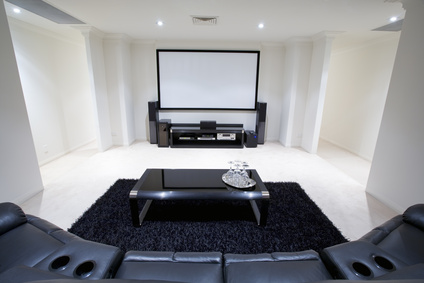Watching films in your living room has transformed from a simple pastime into an encompassing experience that competes with the experience of a movie theater. With improvements in tech, creating a custom home theater has turned into easier than it has ever been. Whether you are a minimalist wanting to duplicate the big screen experience, or someone who enjoys to experience family film nights in comfort, realizing how to install a home cinema is important.
In this comprehensive guide to home cinema installation, we will cover everything you need to know ahead of diving into your project. From the essential components to consider, like choosing the best projector and sound system, to design tips that optimize both sound quality and aesthetics, we will discuss it all. We will also talk about whether you should take on the installation yourself or hire professionals, and provide insights into how to change any room, regardless of size, into a stunning theater. Let this adventure into audio and vision inspire you to create the perfect cinematic environment tailored to your needs.
Crucial Home Cinema Components
Building a stunning home cinema demands careful choice of essential components that operate together to offer a superior viewing and audio experience. A top-quality projector or oversized television resides at the heart of your setup, providing the clear images necessary to engage you in your beloved films. When picking a projector, evaluate factors like resolution, lumens, and the size of the screen space to guarantee the highest potential performance. For televisions, search for models that are compatible with 4K or even 8K to capitalize on the latest content available.
Audio is also crucial in a home cinema system. A multi-channel audio system improves the audio experience, making you feel like you're involved in the movie. There are various choices on the market, from sound bars to complete 7.1 or even 9.2 speaker systems. find out this here will rely on your space dimensions, configuration, and personal preference. Always strive for a surround sound setup that complements your visual display, as the synergy between sound and image is what makes cinema truly immersive.

Lastly, the chairs in your home cinema is of utmost importance. Comfortable furniture is essential for extended viewing sessions, so consider movie theater chairs or recliners that allow for ideal positioning and comfort. Make sure that the layout encourages a good line of sight to the screen while maintaining good acoustics within the room. The right seating combined with your audio and visual components can transform your space into a true cinema experience.
Home Cinema Design and Setup Recommendations
When designing your home cinema, the ideal room layout is crucial for improving the viewing experience. Aim for a rectangular room, where the screen is positioned on the shorter wall to allow for ideal seating distances. A frequent recommendation is to place seating at least 1.5 times the diagonal size of the screen for full HD and nearer for 4K displays. Arrange seats in tiers if feasible to avoid interference and ensure an interrupted view for all viewers.
Acoustic enhancements play a vital role in improving sound quality. To enrich your home cinema's acoustics, consider adding soundproof panels, carpets, and curtains that can absorb sound waves and reduce echo. Strategically placed sound-absorbing materials can help create a more captivating audio experience, making it simpler to enjoy dialogue and faint sound effects. It's also important to avoid placing large, hard surfaces directly opposite where you will be placed, as this can create unwanted sound reflections.
Lighting is another vital aspect of setting the ideal atmosphere for film screenings. Utilize a combination of ambient and task lighting, such as dimmable ceiling lights and sconces. Consider installing light-blocking curtains to manage outside light and prevent glare on the screen. Intelligent lighting systems can enhance the experience; for instance, they can be programmed to lower automatically when the film starts, creating a true theater ambiance without distractions.
### Maintenance and Upgrades
Routine upkeep is crucial to ensure your home cinema system operating at its best. This includes cleaning your audio-visual equipment, checking connections, and ensuring that all components are operating correctly. Dust can accumulate in devices over time, affecting performance and possibly leading to overheating. It is advised to set up routine inspections and cleanings to enhance durability and sound quality, which can be done easily by yourself or through professionals.
When it comes to upgrades, technology is constantly advancing, and updating your theater setup can greatly improve your viewing experience. Consider investing in higher resolution displays, such as 4K or 8K projectors, to fully utilize the latest media formats. Additionally, upgrading to newer surround sound systems can provide a more immersive audio experience. Be mindful of the advancements in streaming technology and smart home integration, which can also enhance convenience and connectivity in your theater system.
Finally, it's smart to stay informed about common issues that may arise in home theater systems. Knowing how to troubleshoot problems can save you time and money. Make sure to read manuals and consult online resources for guidance. If persistent issues occur, having a reliable installer or technician you can get in touch with can make all the difference, guaranteeing that your cinema remains in optimal shape for all your movie nights.
